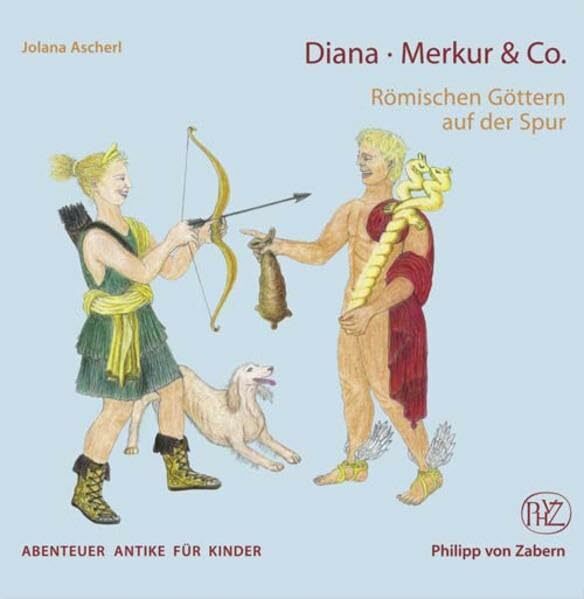
Maschinenraum der Götter
Kurzinformation
inkl. MwSt. Versandinformationen
Artikel zZt. nicht lieferbar
Artikel zZt. nicht lieferbar

Beschreibung
Die alten Kulturen Ostasiens, des Nahen und Mittleren Ostens und des Mittelmeerraumes zeichnen sich durch spektakuläre wissenschaftliche Erkenntnisse und Fortschritte aus, die in der Mythologie gespiegelt und gesteigert werden. In der Spätgotik nur zögerlich, in der italienischen Renaissance jedoch mit Macht dringt dieses Wissen zunächst gegen den Widerstand der christlichen Kirche in den europäischen Raum ein. Das Begleitbuch zur Ausstellung verhandelt die aktuellste Forschung zu Wissenschaft und Technologie in Mythos und Kunst von der Antike bis in das goldene Zeitalter der arabisch-islamischen Kultur. Beleuchtet werden die frühen präzisen Aufzeichnungen astronomischer Ereignisse ebenso wie die Technologie der Automaten und kinetischen Skulptur. Neuste Erkenntnisse unter anderem zum berühmten griechischen Mechanismus von Antikythera, einem analogen Computer, oder zu den raffinierten drehbaren Decken und Böden der Bankettsäle im Palast des römischen Kaisers Nero veranschaulichen die Bedeutung der Automatisation von Skulptur in ihren Bezügen zur Naturwissenschaft im islamisch-arabischen Kulturraum. Großartige Kunstwerke, die antike Mythen wiedergeben, Modelle animierter Skulptur, eindrucksvolle wissenschaftliche Apparate und Automata des mediterranen und islamisch-arabischen Kulturraums Internationale Autor/-innen spiegeln die aktuellste Forschung zur Wissenschaftsgeschichte in Verbindung mit der Kunsttechnologie Ausstellung: Liebieghaus Skulpturensammlung, Frankfurt/M., 08.03.2023 bis 10.09.2023 von Brinkmann, Vinzenz
Produktdetails

So garantieren wir Dir zu jeder Zeit Premiumqualität.
Über den Autor
Essays by Vinzenz Brinkmann, Lis Brack-Bernsen, Shiyanthi Thavapalan, Adrienne Mayor, Oliver Primavesi, Françoise Villedieu, Tony Freeth, Effie Photos-Jones, Jakob Salzmann, Roshdi Rashed, Martina Müller-Wiener Vinzenz Brinkmann studied Classical Archaeology in Munich and Athens. He teaches at the Ruhr University Bochum and at the Goethe University Frankfurt am Main. Since 2007, Vinzenz Brinkmann has been the head of the Antiquities and Asia departments of the Liebieghaus Sculpture Collection. Lis Brack-Bernsen teaches history of science at the University of Regensburg. Her field of research is the history of astronomy and mathematics with a special focus on Babylonian astronomy and its origins. Shiyanthi Thavapalan studied history at York University in Canada and Near Eastern history and Assyriology at Yale University. Her research fields include polychromy in ancient sculpture, ancient technologies, Mesopotamian cultural and economic history, and ancient color language. Adrienne Mayor is a historian of ancient science and folklorist. Mayor specializes in ancient history and the study of "folk science." She is a research fellow in the Department of Classics and the Program for the History and Philosophy of Science at Stanford University. Jakob Salzmann, classical archaeologist, research fellow at the Liebieghaus Sculpture Collection. Oliver Primavesi studied Classical Philology at the Universities of Heidelberg and Oxford. He teaches Greek philology at the Ludwig-Maximilians-University in Munich. His main research interests are classical philology, early Greek epic, pre-Socratic natural philosophy, philosophy of Aristotle, text and image in ancient literature. Among other awards, he received the Order of Merit of the Federal Republic of Germany in 2010. Françoise Villedieu is an archaeologist and director emerita of research at the Centre national de la recherche scientifique, Paris. Effie Photos-Jones, archaeologist, Honorary Research Fellow (Faculty of Humanities), University of Glasgow. Tony Freeth is an Honorary Professor in the Department of Mechanical Engineering, Faculty of Engineering, University College London. He is founding member of the Antikythera Mechanism Research Project at UCL, London. He studied mathematics at Cambridge and Bristol. Roshdi Hifni Rashed is a historian of science and mathematics. He is specifically focused on medieval Islamic mathematics. He has taught at the University of Paris VII and at the University of Tokyo. He is research director of the Centre national de la recherche scientifique, Paris, and was director of the Centre d'Histoire des Sciences et Philosophies Arabes et Médiévales in Paris. He is the recipient of many awards and prizes. Martina Müller-Wiener studied Islamic Studies, Islamic Philology, Art History and Ethnology in Frankfurt and Mainz, was a research assistant at the Seminar for Oriental Art History at the Rheinische Friedrich-Wilhelms-Universität Bonn. She is a staff member of several archaeological excavations in Syria and Afghanistan. She teaches at the TU Berlin and at the Goethe University Frankfurt/Main.

- Gebunden
- 272 Seiten
- Erschienen 2022
- Panini Verlags GmbH

- Gebunden
- 487 Seiten
- Erschienen 2021
- Edition Roter Drache

- paperback
- 292 Seiten
- Erschienen 2025
- tolino media

- Kartoniert
- 140 Seiten
- Erschienen 2023
- Ancient Mail

- Gebunden
- 228 Seiten
- Erschienen 2015
- AMRA Verlag

- Gebunden
- 328 Seiten
- Erschienen 2022
- Panini Verlags GmbH

- Kartoniert
- 464 Seiten
- Erschienen 2013
- FISCHER Taschenbuch

- paperback -
- Erschienen 2004
- O M F International

- hardcover -
- G.J.Göschen'sche Verlagsbuc...

- Gebunden
- 56 Seiten
- Erschienen 2022
- Splitter-Verlag



































